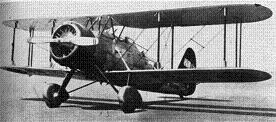![]() The Pacific War Online Encyclopedia
The Pacific War Online Encyclopedia
|
| Previous: D1 Class, Japanese Submarines | Table of Contents | Next: D2 Class, Japanese Submarines |

Aichi D1A2 "Susie"
| Dimensions | 37'5" by 30'6" by 11'2" 11.40m by 9.30m by 3.40m |
| Weight | 3342-5754 lbs 1516-2610 kg |
| Speed | 192
mph at 10,500 feet 309 km/h at 3200 meters |
| Cruising speed | 138
mph at 3,280 feet 222 km/h at 1000 meters |
| Climb rate | 21 feet per second 6.4 meters per second |
| Ceiling | 22,900 feet 6980 meters |
| Wing area | 373.5 square feet 34.7 square meters |
| Power plant | One 730 hp (544 kW) Nakajima Hikari 1 9-cylinder air-cooled radial engine driving a two-bladed propeller |
| Armament | Two cowling 7.7mm Type 92 machine
guns One rear flexible 7.7mm Type 92 machine gun |
| External stores | One 551 lb (250kg) bomb plus two 66 lb (30kg) bombs |
| Range | 576 miles 927 km |
| Production | 162 D1A1 and 428 D1A2 through 1940 by Aichi Tokei Denki K.K. at Nagoya. |
| Variants | The D1A1 used a less powerful Nakajima Kotobuki 3 engine and was therefore slightly slower. |
The D1A was the Japanese Navy’s last biplane dive bomber. It was largely relegated to training duty by the start of the Pacific War, with just 68 D1A2s serving in second-line units. Aircraft of this type were responsible for sinking the U.S. gunboat Panay in 1937, and the Allied navies probably expected the Japanese carriers to still be using aircraft of this type when war broke out.
The design dated to 1933 and emphasized structural
strength and maneuverability. Performance was required to exceed that
of earlier designs. The designers based some features on the German He 66 biplane dive bomber, but
with a strengthened undercarriage for carrier landings and a second
seat. Production commenced in 1934.
References
The Pacific War Online Encyclopedia © 2007, 2009 by Kent G. Budge. Index